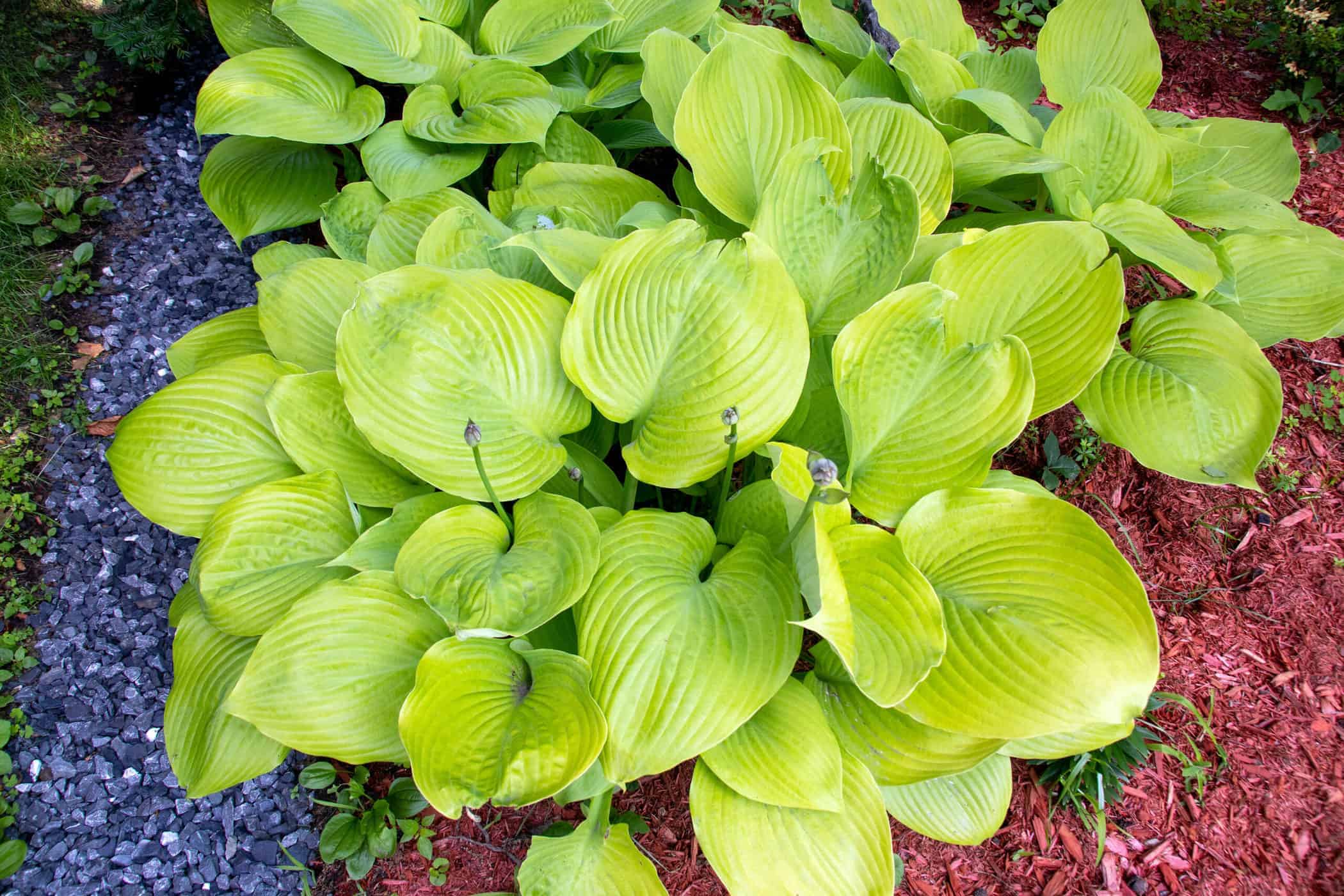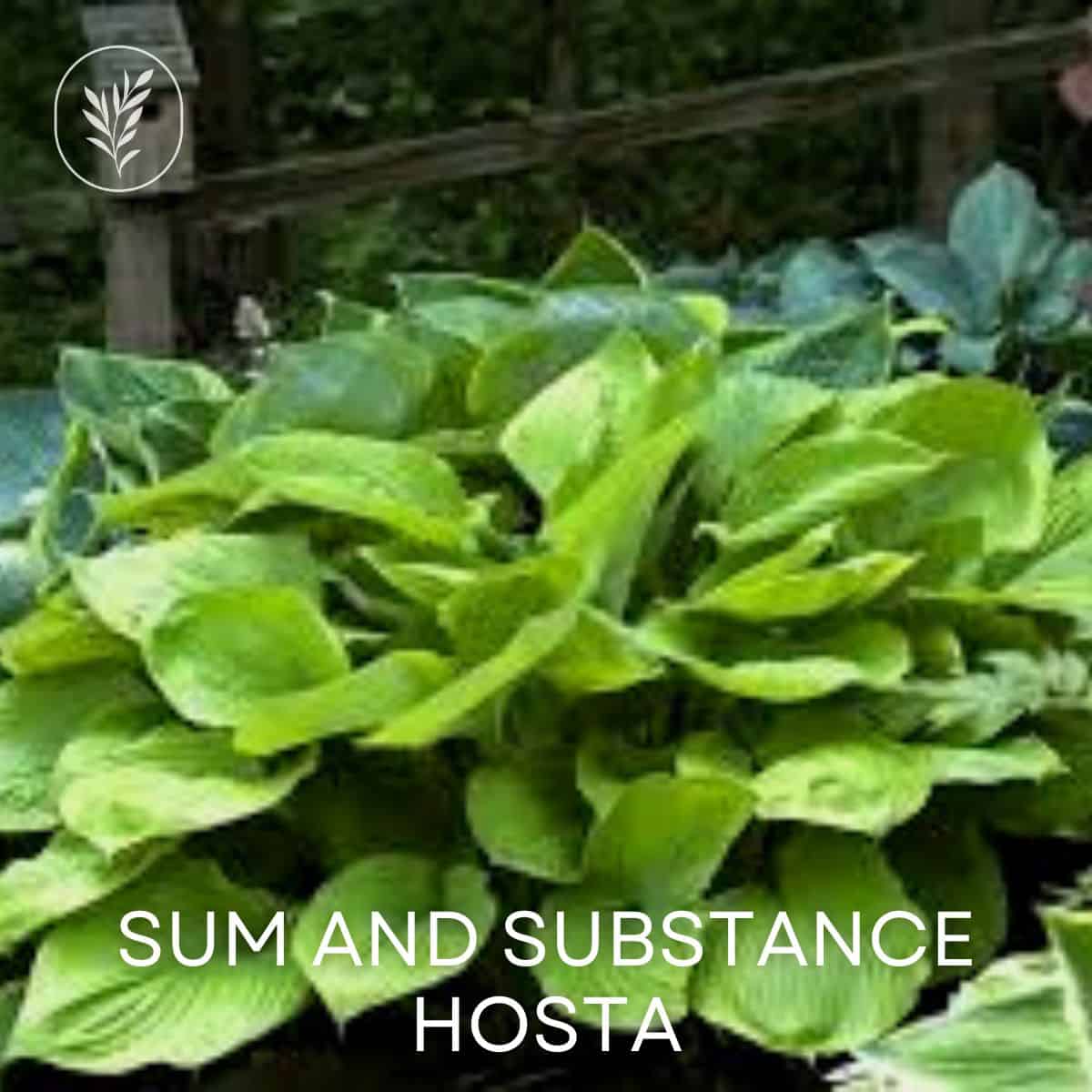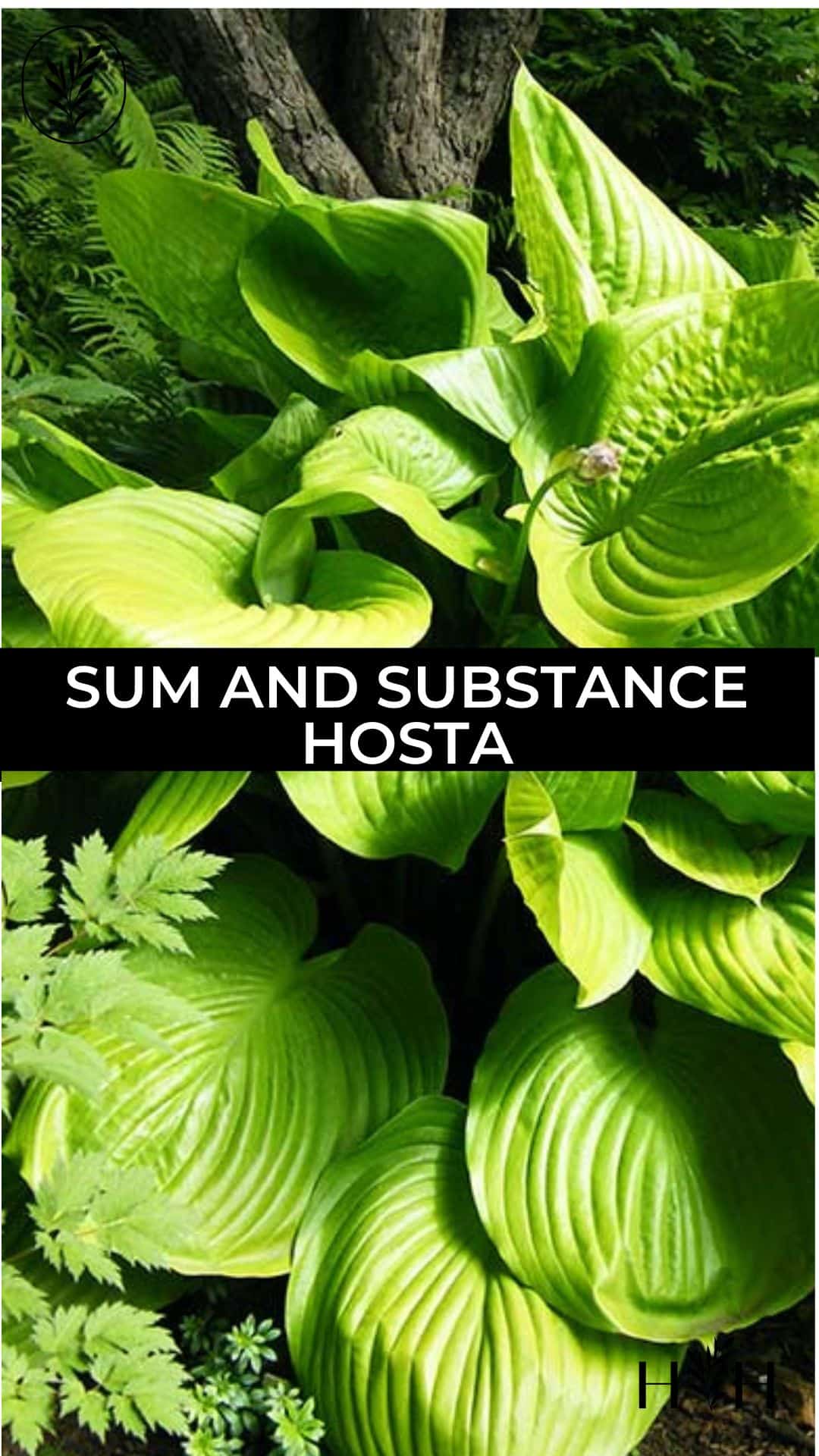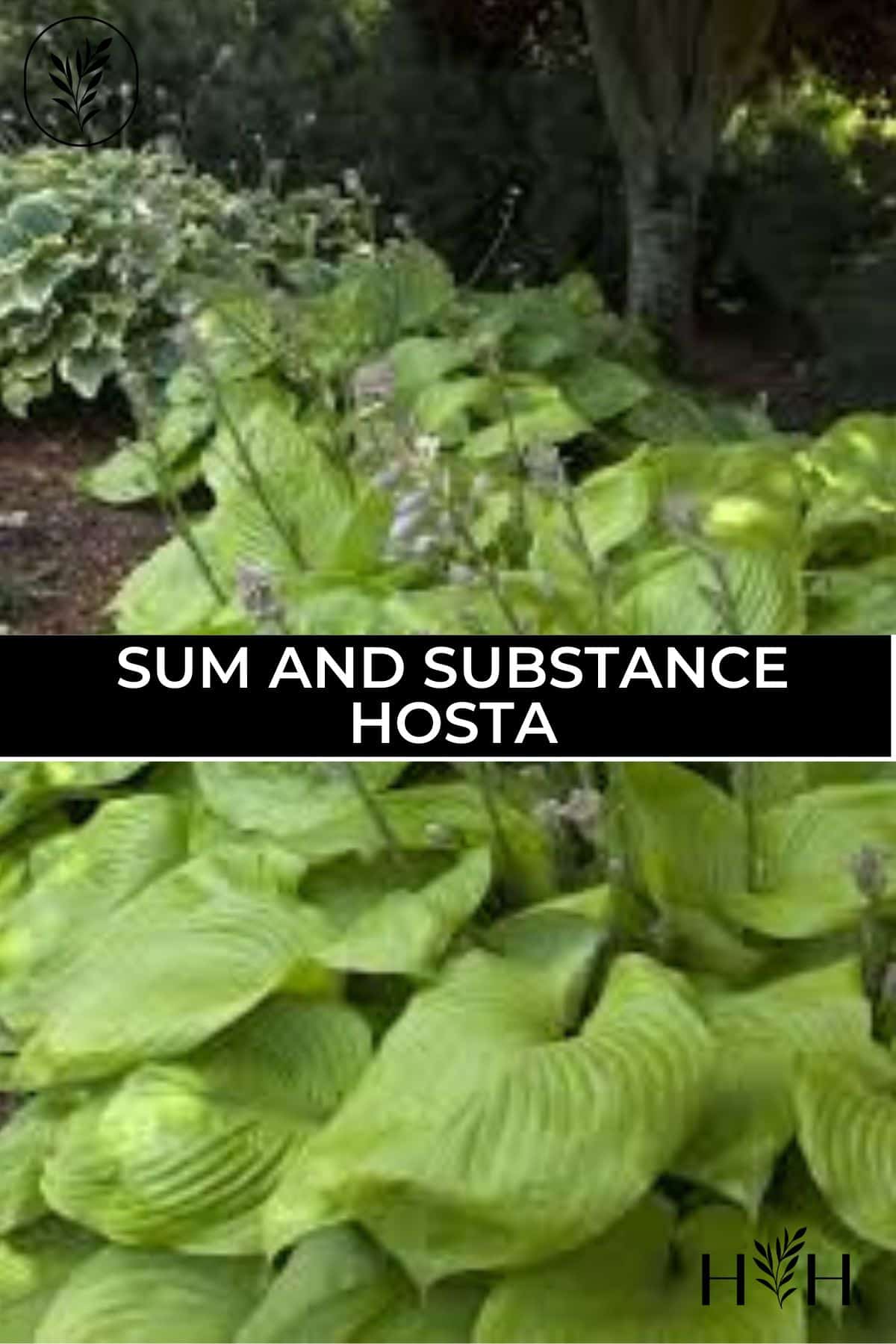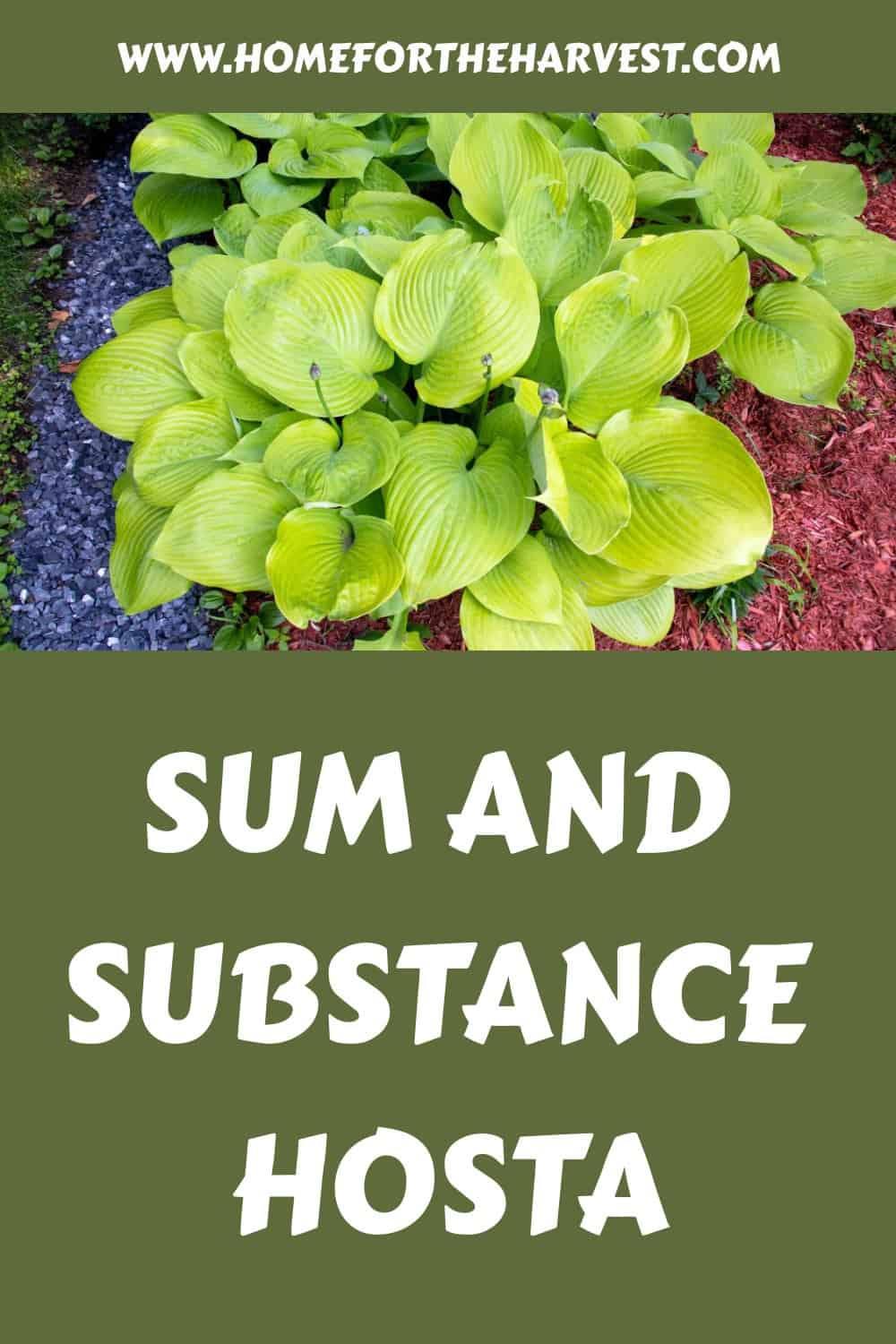Sum and Substance hosta is a very large hosta cultivar with wide light-green leaves. Individual plants routinely grow to 5′ wide and 3′ tall. This hosta is tolerant of heat and sunlight (and even develops its best coloring with a dose of morning full sunlight). Sum and Substance is a consistent and reliable ornamental plant in the landscape with very low maintenance requirements.
Sum and Substance hosta basics
The Sum and Substance hosta is a very popular bright yellow-green large hosta variety. Sum and Substance specimens are very large hosta plants, producing a mound of leaves that can regularly spread out five feet wide. The plants also grow taller than most other hostas, reaching an impressive three feet tall in good growing conditions.
Each leaf can grow over a foot long (and sometimes over a foot wide at the widest point). The flowers are funnel-shaped and bloom in a pale lavender color in late summer. The flower stalks stand up above the foliage at about 3.5 feet tall.
The Sum and Substance hosta was bred in the early 1970s by Florence Shaw of Weston, Massachusetts. This variety was introduced in 1980 by retired high-school science teacher Paul Aden of Baldwin, Long Island (New York). The Sum and Substance Hosta received the prestigious RHS Award of Garden Merit in 1993 and went on to become the American Hosta Grower’s Association’s 2004 Hosta Of The Year.
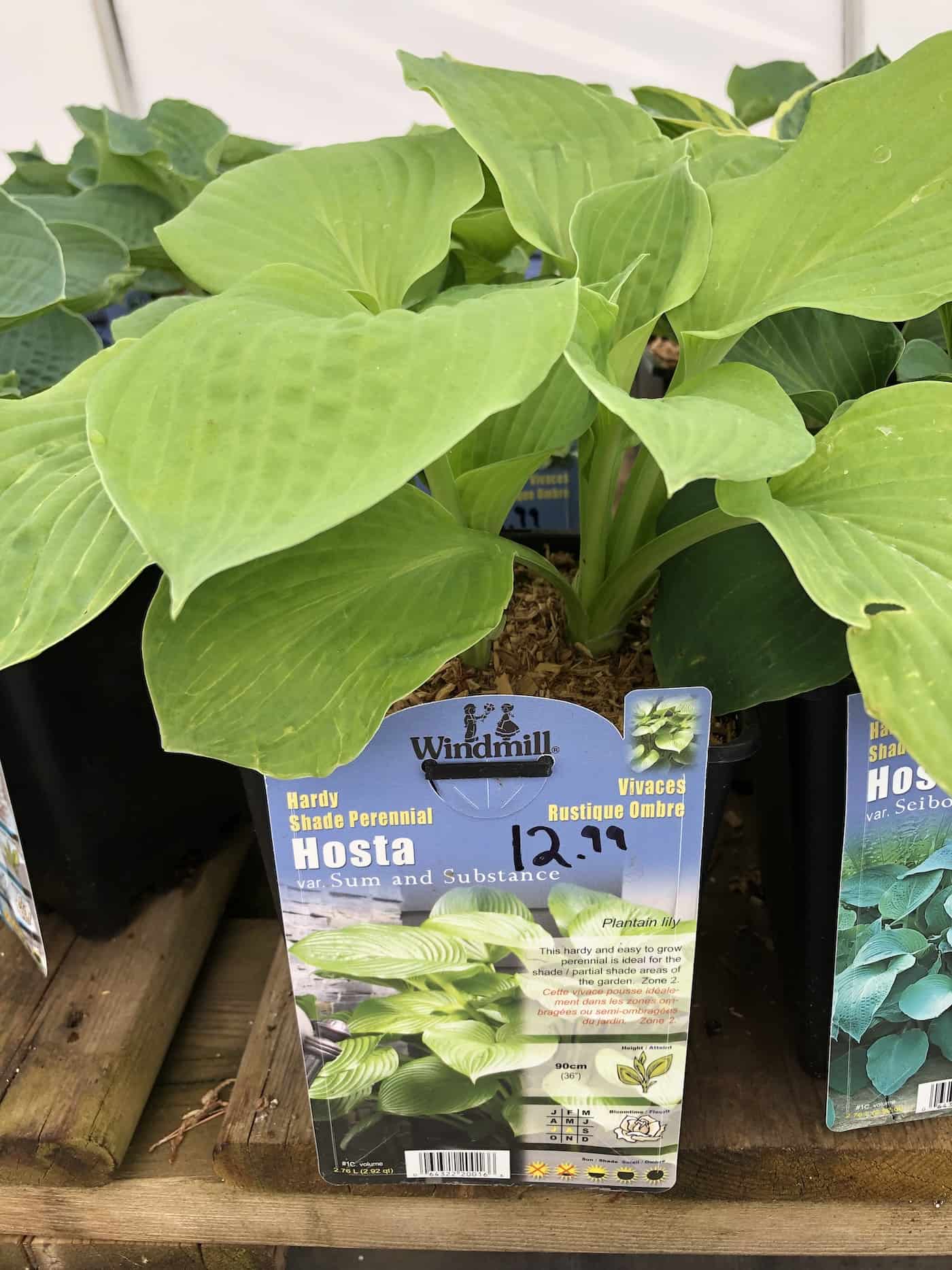
Choosing a planting spot
Hostas grow best in nutrient-rich, slightly acidic fertile soil that is moist (not dry), but that drains excess water away easily. Typically, sandy loam soil enriched with organic compost is preferable. Hostas grow best in sheltered locations, where the large leaves are protected from harsh sunlight, strong winds, and potentially damaging precipitation like hail.
Plant your hosta in a partial sun-partial shade location. Sum and Substance hostas are more tolerant of full sunlight than many other hosta varieties. The color of their leaves is best when these plants do receive some full sunlight (morning is best in hotter climates). These hostas were developed on Long Island and are also very tolerant of heat when healthy. Plants can tolerate heat waves (even in the temperature range around 100°F (38°C), provided they have adequate water and shade.
Sum and Substance hostas grow to be quite large in good conditions, often reaching up to five feet wide and 3 feet tall. The individual leaves can each get about 18″ long and over a foot wide in the center. Be sure to plant this hosta in a location where it has room to spread and grow to its full mature size.
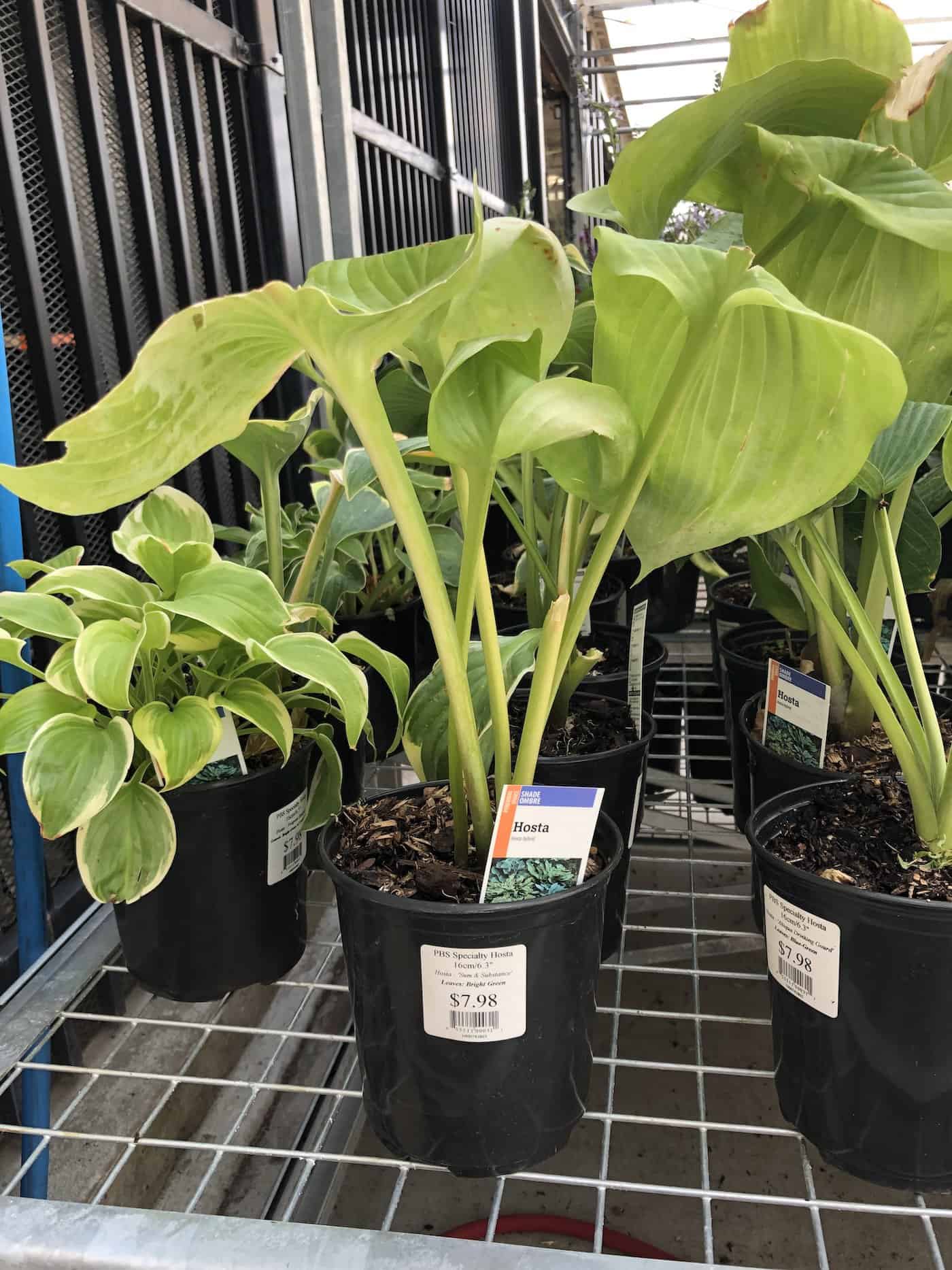
Planting the Sum and Substance hosta
The best time to plant a Sum and Substance hosta is in early spring or in the fall after the summer’s heat has peaked. This keeps the plants from getting burned by the sun and gives them adequate time to establish roots before the winter.
Hostas grow best in well-drained, slightly acidic soil enriched with organic matter like homemade compost. Once the soil is prepared, dig a planting hole that is about twice as wide as the plant pot but no deeper than the soil in the plant pot.
Gently pull the plant pot off the root ball and carefully loosen any thick white roots circling the root ball. Place the loosened root ball into the hole and backfill with rich soil. You can also add starter fertilizer if you like, but this is not necessary in most adequate soil conditions.
Water the hosta deeply after planting. Then apply a 2-3 inch thick layer of organic mulch, like composted yard trimmings or bark mulch on top of the soil surface. This will help the soil retain its moisture and also discourage weed seeds from germinating.
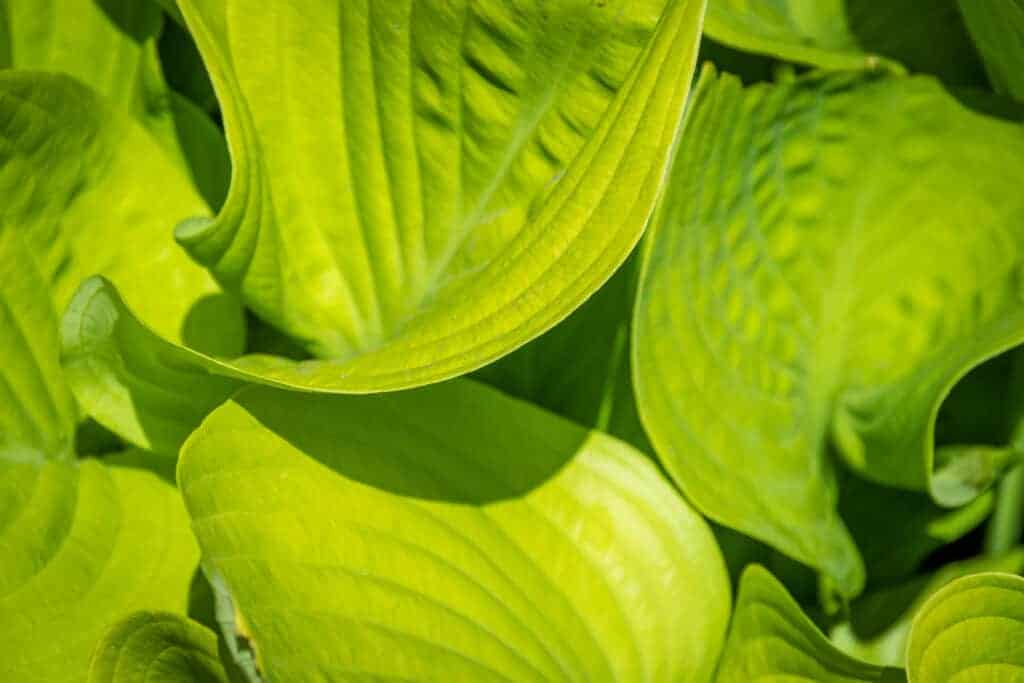
How to care for Sum & Substance hostas
Consistent watering is the most important maintenance task for new Sum and Substance hostas. Give them about 1” (25mm) of water each week. If the hostas receive this much rain that week, they likely don’t need to be watered, but any shortfall should be made up with supplemental watering.
Try not to water the leaves of the Hosta, and instead apply the water directly to the soil overtop of the roots (drip irrigation works very well for hostas). Hostas are best watered early in the morning, as evening watering can cause lingering moisture and encourage overnight slug and snail damage.
As the Sum and Substance hosta grows, it will become more and more self-reliant. It will need a lot of water to keep it growing, but apart from that, you should have no problems growing it. The plant’s foliage should grow in kind as long as the roots are left free to expand. This variety is less attractive to slugs and snails than many other hosta varieties.
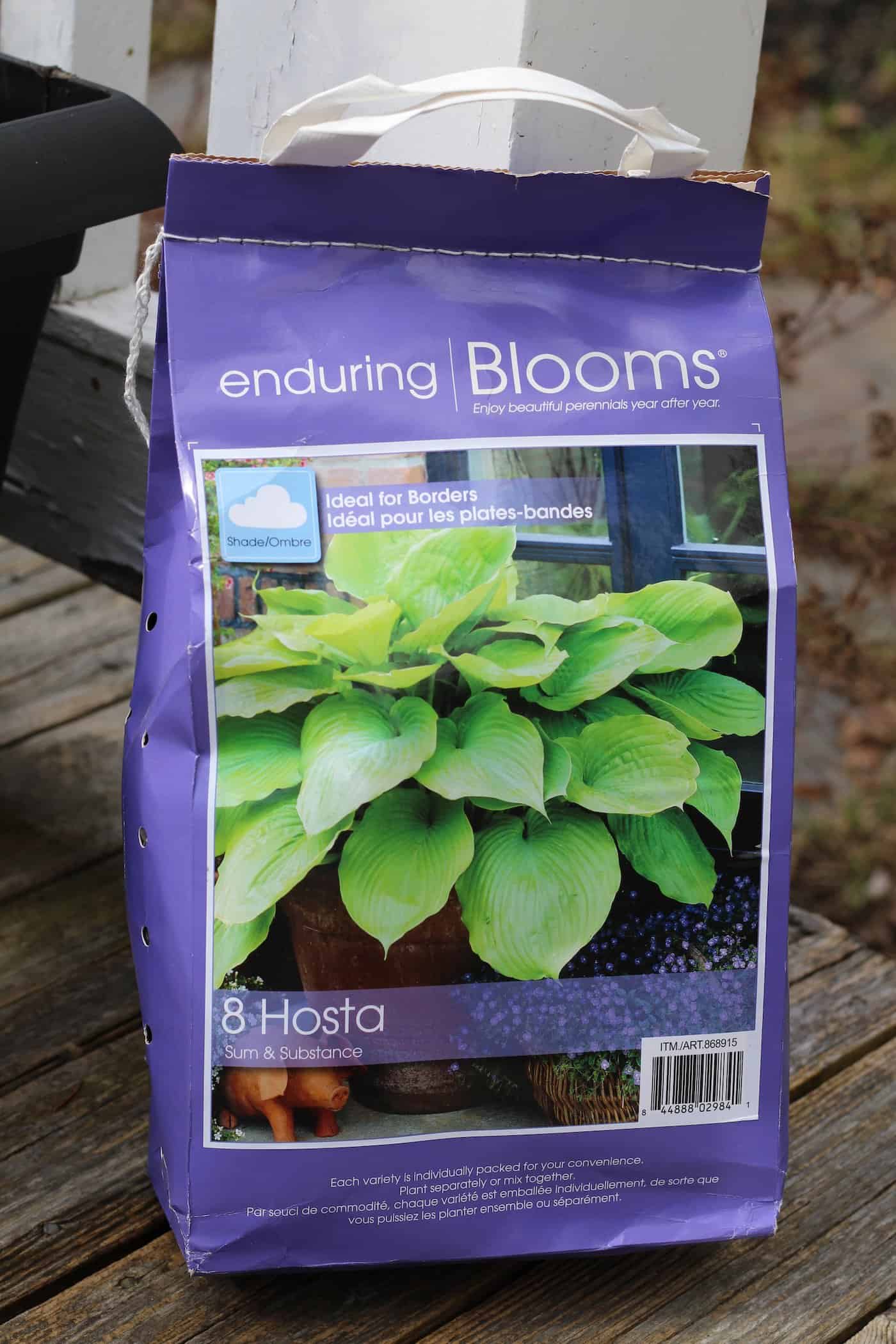
Companion planting with Sum & Substance
Sum & Substance Hosta’s bright cheerful leaves make it excellent for pairing with darker foliage plants and even with flowering shrubs. Try it in front of a white Hydrangea or among some Ostrich Ferns of a similar shade. Alternatively, plant some contrasting foliage plants like Coral Bells or Brunnera in front of this large variety or a colorful tree like a Japanese Maple overhead.


